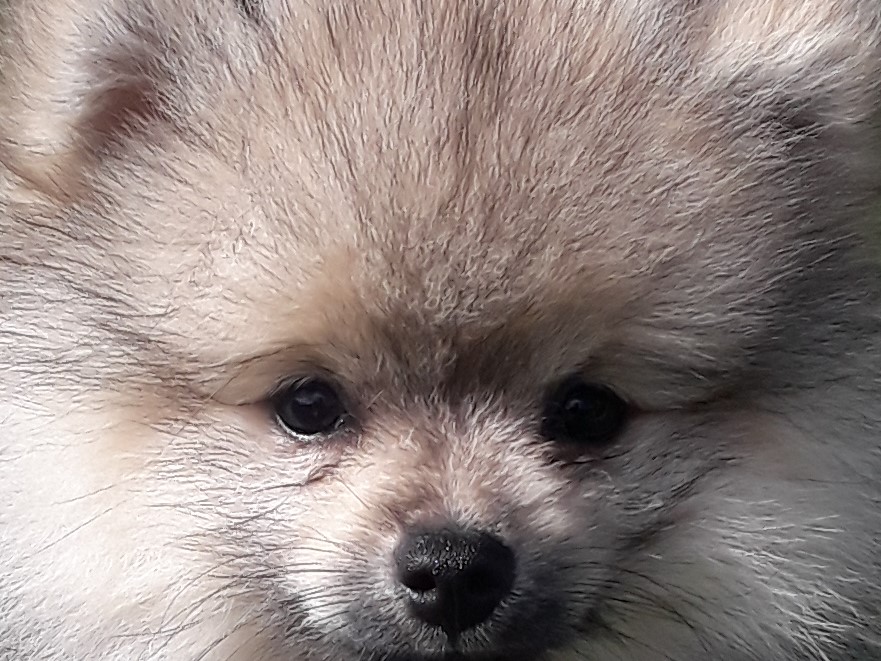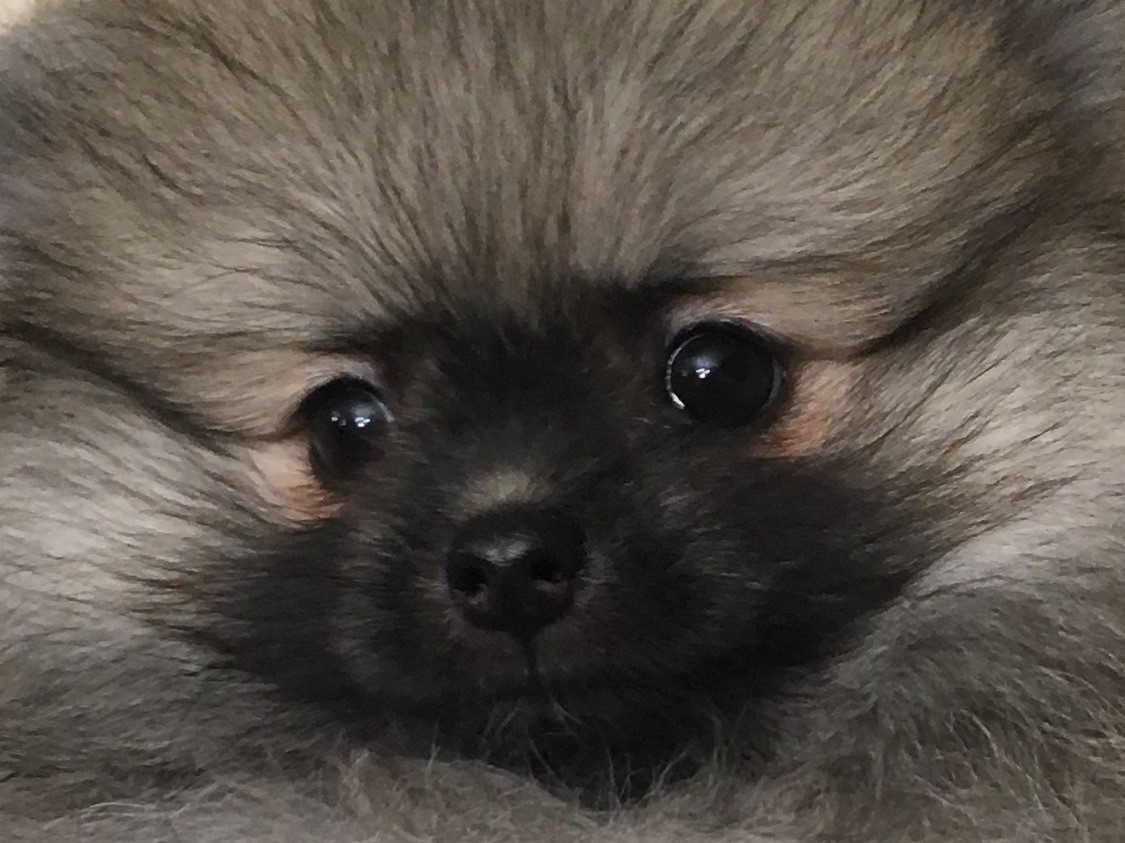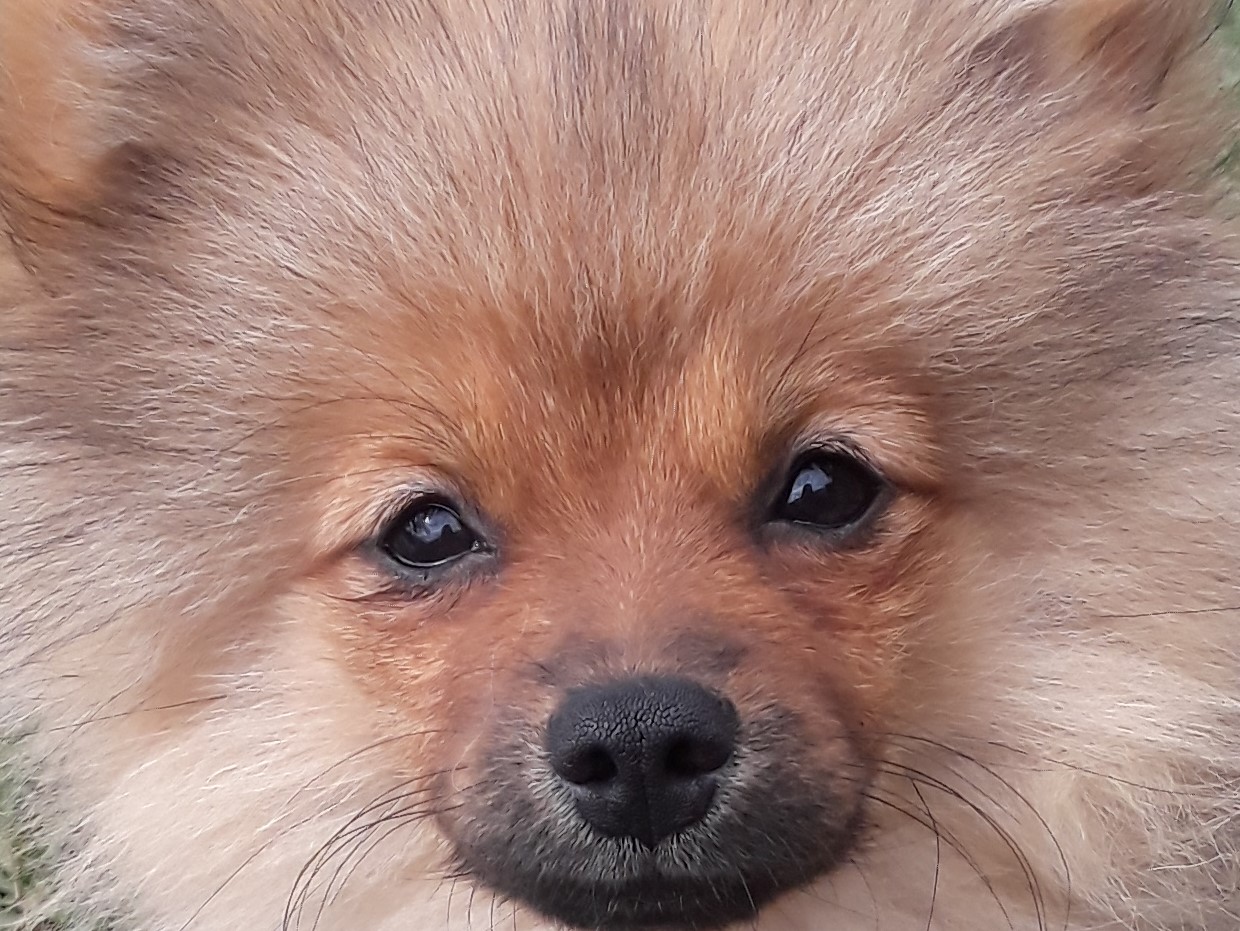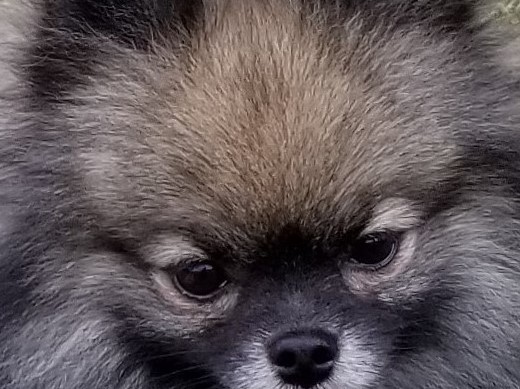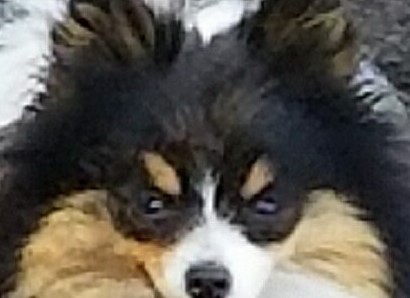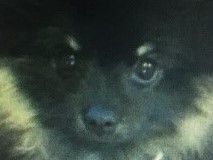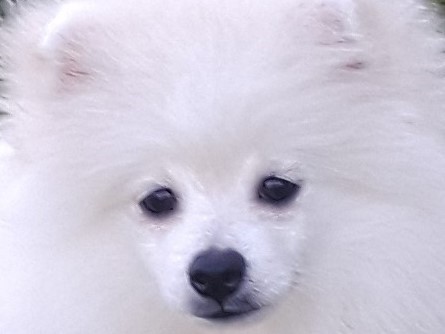SABLE POM COLORS




lavender, mask
chocolate
cream, no mask
blue, wolf
orange
wolf, parti
red
cream, mask
white, wolf
Sables are the most common color that Poms come in; some are rare (wolf, blue, red, beaver, chocolate) and some traditional (cream, orange). Sabeling is any color (most common is black) with the sable hairs mixed with the base color of the Pom. The true base color is commonly found at the bottom of the back of the ears.


Sables, when mature, can be very dark (see sample on left) and others are only left with black whiskers (see sample on right). Both are cream sables.
Below is an example of how a sable can change before reaching maturity; it can keep or lose it's black mask, the coat can get lighter or darker.
There are not ANY Poms that have zero changes in color as they mature; it's just a matter as to what degree this happens. During the 1st year a pup will have a drastic transformation, referred to as the 'uglies'. The soft puppy coat falls out and is replaced with the permanent adult coat. Adults are either double coated (2 layers; an inner dense undercoat & longer guard haired outer coat or they can be single (flat) coated. There is no such thing as a triple coat! A great reference for Pom colors (and lots of other info) is The Pet Pom Book, available in hard copy or eBook.









this Pom will likely be a dark (heavy) cream sable...
WOLF SABLES
The wild/wolf sable gene AW was first discovered in Canada. It is a rare and coveted pattern in Poms and perhaps the oldest among animals... order of gene dominance: AY AW AT A
AY-AW: dog is fawn, carries wild/wolf sable AW-AW: homozygous for wild/wolf sable AW-AT: dog is wolf sable, carries blk & tan AW-A: dog is wolf sable, carries recessive blk
Today, there are many breeders who use the term 'wolf sable' when selling their pups. They are often refering to color only, not genetics. Many people assume that wolf sable refers to a gray/black/tan/white color coloring. Just because a dog/puppy looks like a wolf does not in fact make it a true wolf sable. The ONLY way to determine a wolf sable is by genetic testing from a reputable lab (such as UC Davis, CA). Above are the Agouti coat test codes indicating what a dog actuclly is genetically. The wolf sable gen is rare. Many pups advertised as wolf sables are actually cream, orange, red sables and are not genetic wolf sables. These puppies are adorable when young and look like a wolf but as they mature their true genetic color emerges and the 'wolf look' often disappears. Don't pay more for a puppy unless the breeder can provide genetic test results. There are very few true wolf sable breeders in the US and even fewer producing quality wolf sables. At WolfPack Poms, we are attempting to produce wolf sables in the colors of wolves found in the wild. Our goal is to not only preserve the rare AW gene but to match the colors of the wild wolves. We provide written genetic test results on all wolf sable puppies. Visit 'Our Wolf Sables' page to view our moms, dads and available puppies...






